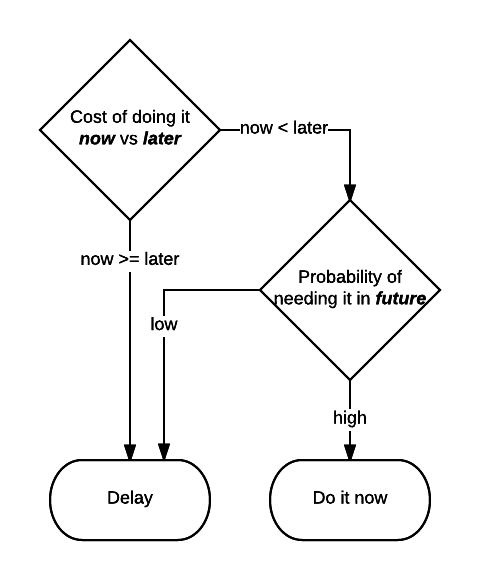What I learnt from uberconf - Software technical conference
I got to attend the wonderful software technical conference - uberconf and I would like share summary of what I learnt from conference in this post.
Feedback about the uberconf
Before I jump on to summary of the sessions, let me share my impression about the conference. This is one the best technical conference I had attended. I tweeted
Uninterrupted flow of food for mind and body.
The best thing I liked about the conference is that the sessions are 1.5 hours long that gave us enough time to deep-dive and learn the subject. Also, the some of the longer subjects were split into two parts so that we can learn them in depth and do some hands on work. The speakers are not only experts on their subject, they are good mentors and presented their sessions more engaging style.
The only complaint I have is that we were given only audio recordings of the session for offline listening. It would be have been great if video recordings are available after the conference.
Summary of learnings from sessions
Twelve ways to make code suck less by Venkat Subramanium
- Schedule Time to Lower Technical Debts : if technical debt is not paid back, we’ll end up with technical bankruptcy.
- Favor high cohesion: Narrow, focused, does only one thing well
- Favor Loose Coupling: Tight coupling makes code hard to extend hard to test
- Program with Intention: Most of the time, we program accidentally without deliberate intention. Any code written should have a clear intention.
- Avoid Primitive Obsession: Favor Functional code over imperative.
- Prefer Clear Code over Clever Code
- Apply Zinsser’s Principle on Writing: Great timeless book On writing well by Zinsser’s for writing English. But very well applies to code. Principles are Simplicity , Clarity, Brevity, Humanity
- Comment Why, not What: Use comments to describe its purpose and constraints. Don’t use commenting as a substitute for good code.
- Avoid long methods
- Apply SLAP A method should have a single level of abstraction.
- Do tactical code reviews: Peer reviews catch 60% of defects.
- Reduce State & State Mutation : Messing with the state is the root of many problems.
Evolutionary Architecture by Venkat Subramanium
Why Evolutionary architecture?
- We won’t have a good picture of the system at the beginning of project typically when architecture is created. Our knowledge of the system will improve as project mature.
- We should do enough up-front design not
bigup-front design. - The feedback loop is extremely important to be able to course correct.
Planning for Evolutionary architecture
- When prioritizing stories, analyze both business value and architectural impact.
- Work on most valuable and more impactful stuff in the beginning.
- Scrum Velocity - It doesn’t matter how fast you run, it’s important that you run in the right direction.
Principles for Evolutionary Architecture
- Keep it simple: Do minimum to meet the requirements.
- Reversibility: When making a decision, If it is easier to reverse, go for it. If it is hard to reverse, postpone the decision until you no longer can.
- Wait for last responsible moment: Compare the cost of doing it now vs the cost of doing it later.

- Automated testing - Without automated testing and feedback, it’s hard to make a decision later and verify everything still work.
-
Triangulate
- You don’t an interface or abstract base class for everything.
- Instead, write a class, write another similar class if it happens, then. triangulate - extract what is common into a base.
- Postle’s law - Follow Robustness Principle Be conservative in what you send, be liberal in what you accept
- Minimize libraries and frameworks: Don’t build what you can buy (or available open source) . Don’t buy (or download) what you don’t need.
Measuring Quality of Design by Venkat Subramanium
- Quality of design can be measured using two key qualities Stability
(I)and Abstractness(A)of all packages in the application. Where
I = Number of classes this package depends on / (Number of classes this package depends on + Number of classes depends on this package)
A = Number of interfaces / Number of interfaces + Number of classes in this package.
- The distance from ideal design is computed as
D' = | A + I | - 1. Where, smallerD'is better .- The ideal value of
D'is 0. But don’t go for it. -
D' > 0.25is a call for refactoring. -
D' < 0.25is fairly ok, don’t put too much effort in lowering. Because it’s hard to measure the quality of refactoring.
- The ideal value of
- All of these can be automatically computed using jdepend tool (plugins are available for build systems and IDEs) and tracked in CI tools like Jenkins.
Parallel programming with Java 8 Streams by Venkat Subramanium
- Leverage the power of Java 8 streams to easily switch sequential code to concurrent code by using parallel streams.
Frege for Java Programmers by Venkat Subramanium
- Frege is a Haskell for the JVM.
- Frege compiles to Java , runs on the JVM, and reuse with existing java libraries.
- If you love Haskell and purely functional language. Frege is a great choice.
Software Architecture Fundamentals by Neal Ford and Mark Richards
- We should move from traditional layered N-tier architecture to microservices architecture.
- microservices architecture has high score for most of the architecture characteristics like agility, testability, scalability, evolutionary
- But the major complication is we can no longer manually manage applications, deployments , tests , builds etc. DevOps becomes very important.
-
Service-based architecture can be used as a middle ground to reduce complexities of microservices architecture.
- Instead of splitting into thousands of microservices and combine the into service components.
-
Event driven architecture: Works best for applications that don’t need an immediate response and everything can be asynchronously processed.
- It’s easy to build concurrent, scalable , reactive and resilient applications using event driven architecture.
- But the problem with the event-driven approach is it becomes Really hard to understand and monitor entire flow.
-
Microkernel Architecture: can be used to build core system to run minimal functionality and support more functionalities using plugin-modules .
- Managing transitive dependencies and plugin-contracts are the biggest problems with this architecture.
Why does yesterday’s best practice becomes tomorrow’s Anti-pattern by Neal Ford
- Adaptability of software is more important than the predictability of software.
- Evolutionary architecture is crucial for different parts of the application to evolve on its own phase.
- Microservices helps to move towards Evolutionary architecture.
Java Optimizations That Matter by Douglas Hawkins
- Micro-optimizations are just that - not much valuable. Modern compilers are smart enough to implicitly do a bunch of optimizations.
-
java.util.concurrentis awesome , but read docs carefully.
Concurrency Concepts in Java by Douglas Hawkins
- There is no automatic concurrency management in Java. We need to explicitly code for synchronous handling of states during concurrent execution.
- Immutability is your best friend
Immutable objects have a very compelling list of positive qualities. When you create immutable classes, entire categories of problems simply disappear .
Distributed tracing of Microservices Architectures by Matt Stine
- Dapper is a research paper on Large-Scale Distributed Systems Tracing Infrastructure by Google.
- Zipkin is a distributed tracing system based on Dapper . It helps to track complete flow of events in distributed microservice architecture.
- Spring Sleuth provides an implementation of distributed tracing solution for Spring platform based on Dapper and provides great with Zipkin.
I have summarized notes from only few important sessions. Refer to this doc if you like to read my complete notes on all the sessions I attended.
